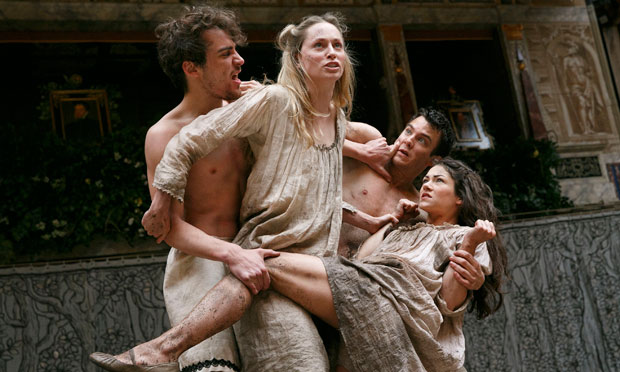Shakespeare
is argued to have produced a large collection of work, including 38
plays and 154 sonnets. His plays are divided into four main sections: the
Histories, the Tragedies, the Comedies, and the Romances.
A Midsummer Night's Dream is a Comedy, even though it does have some elements of the magical
Romance genre. His work has been produced since the Renaissance in all artistic
mediums from the original theatre to opera, symphony, film, and ballet. It has
also been revisited countless times by the same artistic medium
because it is said to be timeless. Shakespeare's topics are about love, hate, murder,
jealousy, miscommunication, chastity, history, and even magic.
A
Midsummer Night's Dream includes the classic elements of
Shakespeare's comedies. It has a framing structure, with the Athenian world
opening and closing the play, has a complex plot using magic and fantasy, has a happy
ending, and uses a major character as comic relief, so to speak. Most of
Shakespeare's plays use this character of the clown, jester, or commoner to
spark slapstick laughter. Bottom and his
players qualify to this kind of
character in the play. Also, these lower-class
characters speak in prose, not in poetry (iambic pentameter), like the rest of
Shakespeare's characters.
This
play is a combination of various plots: the
Athenian lovers Hermia, Helena, Lysander, and Demetrius; the king of the fairies, Oberon who is at odds with his
wife, Titania, because she refuses to relinquish control of a young Indian
prince whom he wants for a knight and the band of Athenian craftsmen rehearsing
the play Pyramus
and Thisbe that they hope to perform for Theseus,
duke of Athens, who is preparing for his marriage to Hippolyta, queen of the
Amazons. Through these three plots,
the common thread is the illustration of the
ridiculous behaviour of lovers of every sort, every creature,
and every class - it seems love is a wholly irrational
passion, the slave of whim and fancy. On the contrary, the duke of Athens, engaged to Hippolyta, represents
power and order throughout the play; he appears only at the beginning and end
of the story, removed from the dreamlike events of the forest.
A
Midsummer Night's Dream was written in
1595 and performed most likely for Queen Elizabeth I and her court.
Here you can find the full text of the play.
Here you can find the full text of the play.
Here you can download a PDF presentation of the play.
Now let's see some videos of this delightful comedy.
Click
here to watch an interesting post-show Q&A from
Sydney Opera House with the cast of A Midsummer Night's Dream.



No comments:
Post a Comment